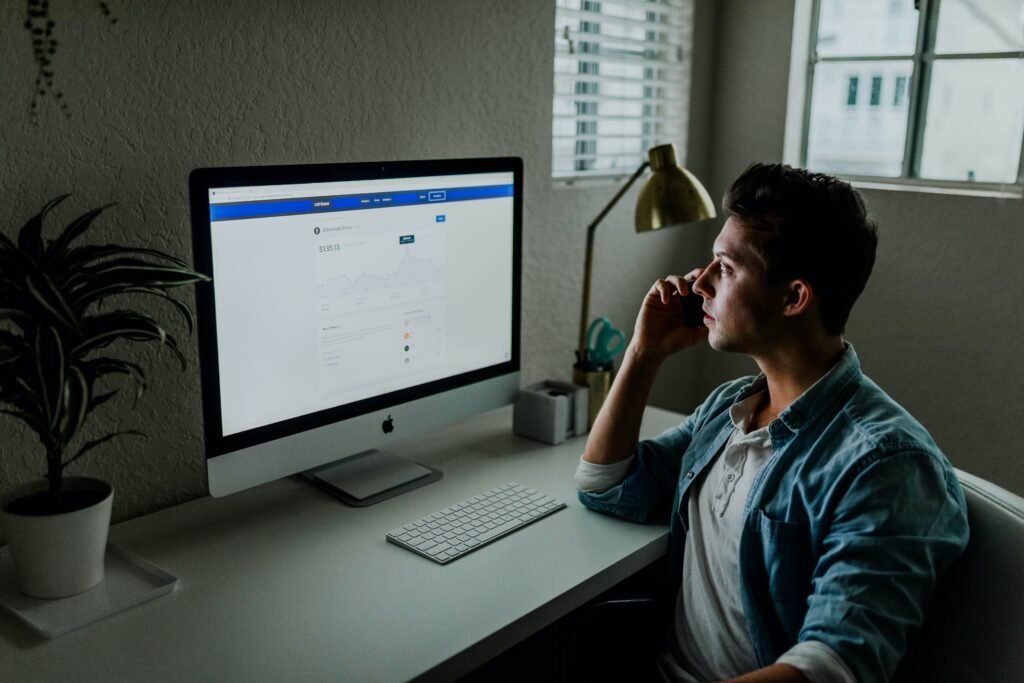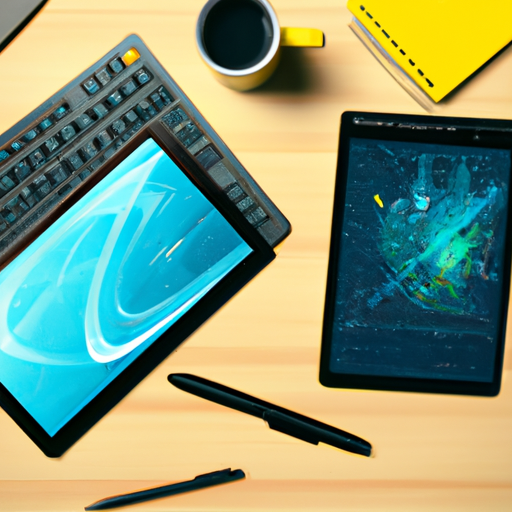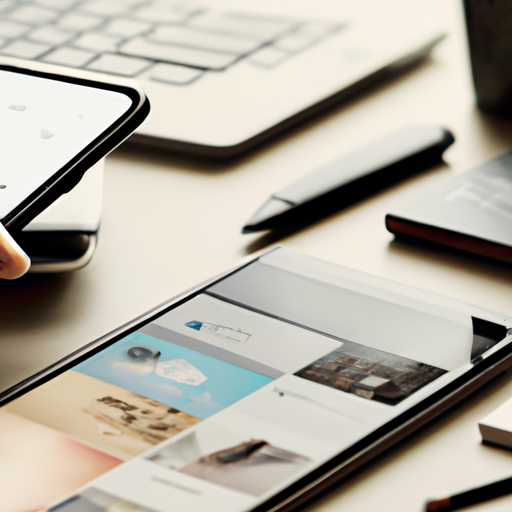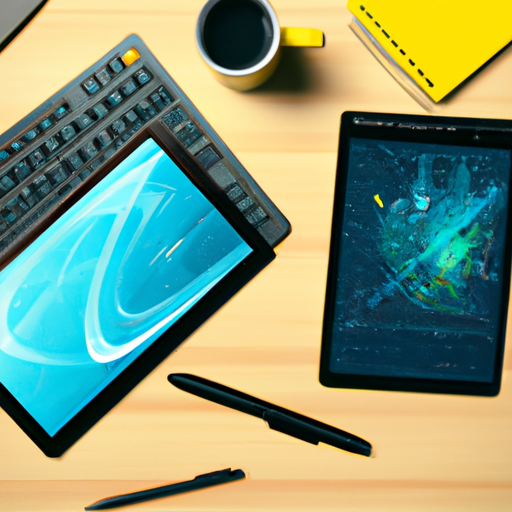In this article, we will explore whether a tablet can serve as a viable alternative to a laptop for editing and creating documents. We will discuss the functionalities and limitations of tablets in comparison to laptops and how they can impact your productivity. By the end, you’ll have a clearer understanding of whether a tablet is the right choice for your document editing and creation needs. Tablet vs Laptop: Editing and Creating Documents
In the modern era of technology, the ability to edit and create documents on the go has become increasingly important. With the rise of tablets and laptops, there are now multiple options to choose from when it comes to mobile productivity. But can you really use a tablet to edit and create documents like on a laptop? In this article, we will explore the key differences between tablets and laptops in terms of software, processing power, ease of use, physical keyboards, display size, storage capacity, battery life, compatibility with file formats, and multitasking capabilities. By the end, you will have a clearer understanding of which device is better suited for your specific needs.
Differences in Software and Apps
When it comes to software and apps, tablets and laptops each have their own strengths and weaknesses. Laptops typically run full-fledged operating systems like Windows, macOS, or Linux, which offer a wide range of productivity suites such as Microsoft Office or Google Workspace. These suites often provide robust editing and creation tools for documents, spreadsheets, and presentations.
On the other hand, tablets primarily use mobile operating systems such as iOS or Android. While tablets also offer productivity suites like Microsoft Office or Google Workspace, the functionality may be more limited compared to their desktop counterparts. However, there are numerous apps specifically designed for tablets that provide a smooth editing and creation experience. For example, Apple’s iPad has the powerful and versatile app called Pages, which offers advanced formatting tools and seamless integration with other Apple devices.
Tablets are also known for their integration with cloud services. Many tablets come pre-installed with cloud storage apps such as iCloud, Google Drive, or Dropbox, allowing you to access and edit your documents from anywhere with an internet connection. This seamless integration with cloud services can be a major advantage for those who collaborate with others or need to access their documents from multiple devices.
Processing Power and Performance
One of the most significant differences between tablets and laptops is their processing power and performance. Laptops typically have more powerful processors and larger amounts of RAM compared to tablets, allowing them to handle resource-intensive tasks more efficiently. If you regularly work with large files or run complex software applications, a laptop with a powerful processor, such as an Intel Core i7 or AMD Ryzen 7, and at least 8GB of RAM may be the better choice for you.
On the other hand, tablets are designed for portability and efficiency rather than raw power. While they may not match the processing capabilities of laptops, tablets with modern processors, such as Apple’s A14 Bionic or Qualcomm Snapdragon, can still handle everyday document editing and creation tasks with ease. They are particularly well-suited for tasks that involve touch input or stylus-based annotation.

Ease of Use and Mobility
Portability is a major advantage of tablets over laptops. Tablets are lightweight and compact, allowing you to carry them around effortlessly. Their form factor makes them ideal for working on the go, whether it be during a commute or while traveling. Tablets also have a longer battery life compared to laptops, allowing you to work for extended periods without needing to charge.
Moreover, tablets offer a user-friendly interface with touch controls, making them intuitive and easy to navigate. The touchscreen functionality provides a natural and immersive way to interact with your documents. Tablets also offer various accessibility features, such as voice dictation or magnification, which can be beneficial for individuals with specific needs.
Laptops, on the other hand, may have a steeper learning curve for those unfamiliar with traditional computer interfaces. However, their larger screens and physical keyboards can offer a more comfortable and efficient typing experience. The presence of a physical keyboard also enables the use of shortcuts and hotkeys, increasing productivity for those who rely heavily on keyboard-based navigation and commands.
Physical Keyboard vs Touchscreen
The presence of a physical keyboard is often a deciding factor when choosing between a tablet and a laptop. Tablets rely on touchscreen keyboards, which offer a different typing experience compared to traditional physical keyboards. While touchscreen keyboards have improved over the years and provide autocorrect and predictive text features, they may not offer the same tactile feedback and precision as physical keyboards.
If your work primarily involves extensive typing or requires a high degree of accuracy, such as writing long reports or coding, a laptop with a physical keyboard may be the better choice. Physical keyboards allow for faster and more accurate typing, as well as the ability to customize keyboard shortcuts according to your preferences.
However, tablets offer unique advantages when it comes to drawing and annotating. Many tablets, such as the iPad Pro or Microsoft Surface, support stylus input, allowing you to sketch or annotate directly on the screen. This can be particularly useful for designers, artists, or anyone who needs to markup documents or make handwritten notes. It provides a level of precision and creativity that is not easily replicated on a laptop.

Display Size and Resolution
The display size and resolution are important factors to consider when editing and creating documents. Laptops typically have larger screens, ranging from 13 inches to 17 inches, which provide ample screen real estate for multitasking and working on complex documents. The larger screen sizes also make it easier to read and edit content, especially for long periods of time.
Tablets, on the other hand, have smaller screens, typically ranging from 7 inches to 12.9 inches. While the smaller screen size may limit your ability to view multiple documents simultaneously, it offers the advantage of portability and convenience. Tablets with high-resolution displays can still provide sharp and clear text, making them suitable for reading and editing documents on the go.
It’s also worth considering the display’s color accuracy and viewing angles. Laptops often feature displays with excellent color reproduction and wider viewing angles, making them well-suited for tasks that involve photo or video editing. Tablets with high-quality displays, such as those with IPS or OLED technology, can also provide vibrant colors and wide viewing angles, although they may not match the color accuracy of high-end laptops.
Storage Capacity and Expandability
The amount of storage available on your device is another important consideration, as it directly impacts the number and size of documents you can store locally. Laptops typically offer larger internal storage options compared to tablets. Most laptops start with at least 256GB of storage, with some models offering 500GB, 1TB, or even 2TB. This allows you to store a large number of documents, media files, and software applications directly on the device.
Tablets, on the other hand, tend to have more limited internal storage. Entry-level tablets often start with 32GB or 64GB of storage, while higher-end models may offer 128GB or 256GB. However, tablets often make up for this limitation by providing expandable storage options, such as microSD card slots. This allows you to increase the storage capacity of your tablet by simply inserting a memory card. Additionally, tablets heavily rely on cloud storage, giving you the flexibility to store your documents online and access them whenever you need them.

Battery Life and Charging
Battery life is a crucial aspect when it comes to mobile devices, especially for those who require long periods of productivity on the go. Tablets generally have better battery life compared to laptops. Due to their more power-efficient processors and optimized operating systems, tablets can often provide 8 to 10 hours or more of usage on a single charge. This makes them ideal for travelers or individuals who frequently work away from an outlet.
Laptops, while not necessarily known for their battery life, have made significant improvements in recent years. Many laptops now offer all-day battery life, with some models lasting up to 10 hours or more on a single charge. However, it is important to note that battery life can vary greatly depending on the laptop’s specifications and usage. Resource-intensive tasks, such as video editing or gaming, can significantly reduce battery life compared to light web browsing or document editing.
When it comes to charging, laptops typically use dedicated chargers and may require a power outlet. Tablets, on the other hand, often use a standard USB cable for charging, making it easier to find compatible chargers or use power banks for charging on the go. This convenience can be a significant advantage for those who prioritize mobility and the ability to charge their devices wherever they are.
Compatibility with File Formats
The ability to work with various file formats is crucial, especially when collaborating with others or sharing documents across different platforms. Laptops, with their full-fledged operating systems, offer broader compatibility with different file formats. They can handle popular file formats such as DOCX, XLSX, PPTX, PDF, and more. This makes it easier to open, edit, and save documents without compatibility issues.
Tablets also offer support for common file formats, but the compatibility may vary depending on the productivity suite or app you are using. Tablets excel at handling commonly used file formats and have improved compatibility over the years. However, it is important to ensure that the specific file formats you work with are fully compatible with the tablet’s software or apps.
Furthermore, laptops often provide more flexibility when it comes to opening and editing non-native files. For example, if you receive a document in an older or less common format, a laptop’s full-fledged software can often handle it without any issues. This can be particularly advantageous for individuals who frequently work with files from different sources or those who rely on specialized software for their work.

Multitasking Capabilities
Multitasking is an essential feature for many professionals, allowing them to work on multiple tasks simultaneously. Laptops excel in this aspect, thanks to their larger screens, physical keyboards, and powerful processors. You can easily have multiple windows or applications open, making it convenient to reference other documents or websites while editing or creating documents.
Tablets have also made significant strides in multitasking capabilities. Modern tablets, especially those running the iPadOS or Android 11, offer split-screen multitasking, allowing you to use two apps side by side. This can be particularly useful when referencing information from one app while taking notes or working on a document in another app. However, the smaller screen size of tablets may limit their multitasking capabilities compared to laptops.
Conclusion
So, can you use a tablet to edit and create documents like on a laptop? The answer depends on your specific needs and priorities. Tablets offer unmatched portability, ease of use with touch controls, and the ability to draw or annotate directly on the screen. They are excellent options for individuals who prioritize mobility, convenience, and the integration of cloud services. With powerful processors and an abundance of apps designed for productivity, tablets can handle most document editing and creation tasks.
On the other hand, laptops provide more processing power, larger screens, physical keyboards, and better overall compatibility with file formats. They are ideal for individuals who require extensive multitasking, resource-intensive tasks, or work with specialized software applications. Laptops excel in situations where a larger screen, precise typing, and extensive storage capacity are essential.
Ultimately, choosing the right device will depend on your workflow, priorities, and the specific tasks you need to accomplish. Consider evaluating the software and apps available, the processing power and performance required, the ease of use and mobility factors, the importance of a physical keyboard or touchscreen, the desired display size and resolution, the necessary storage capacity and expandability options, the required battery life, the compatibility with file formats, and the multitasking capabilities that align with your unique needs. By considering these factors, you will be able to make an informed decision and select the device that best suits your editing and document creation requirements.

